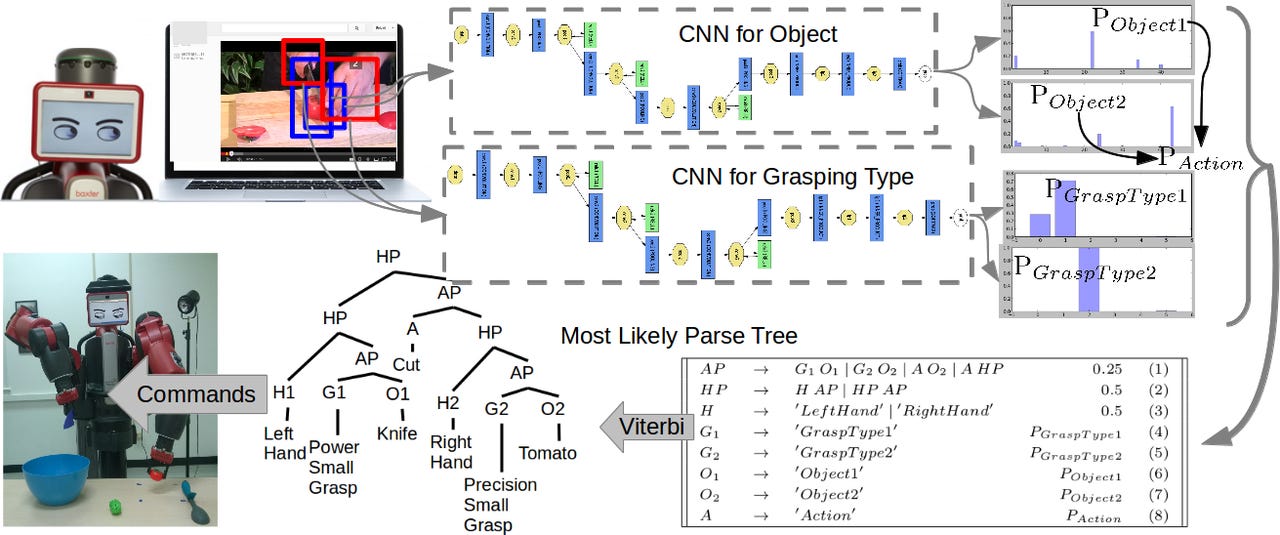Self-learning systems to replace humans in manufacturing


The egg-cracking robot comes courtesy of researchers at the University of Maryland and NICTA, an information and computer technology research center in Australia. Their robotic system learns processes by watching YouTube videos. "Our ultimate goal is to build a self-learning robot that is able to enrich its knowledge about fine grained manipulation actions by watching demo videos," writes the project's lead researchers. The robot utilizes object and grasping type recognition, along with a deep-learning framework that allows it to compile an ever-growing bank of skills and functions. It can recognize what a person is holding in a video, learns how they're holding it, and converts their actions into repeatable steps.
Robotics
The LUT system was specifically developed for welding high strength steel, a material used in extreme conditions and one that's difficult to work with. "In the Arctic, welds must be of higher quality than in warmer regions," says Project Manager Markku Pirinen. "In the North, errors would have catastrophic consequences. For example, the welds must be able to withstand temperatures of up to -60 °C, and they must be flawless." Pirinen points out that the smart welding system will bring significant savings by eliminating the need for post-welding checks and repairs.
The potential for fully automated, self-learning, and self-aware manufacturing systems led a consortium of businesses and institutions led by the University of Nottingham to undertake the Fast Ramp-Up and Adaptive Manufacturing Environment (FRAME) project a few years back. "The aim of the FRAME project is a paradigm shift from the conventional human-driven ramp-up and system integration process to fully automated, self-learning and selfaware production systems," according to a report issued at the conclusion of the investigation. Ramp-up is necessary anytime a manufacturing device is moved, deployed, or constructed, and it typically entails an intensive and person-centered process of fine-tuning and optimization. Oftentimes technicians rely on trial-and-error to move devices toward their maximum sustainable output, and this ends up costing manufacturers significant downtime. It also adds as much as 65% to the underlying cost of a manufacturing system.
Featured
FRAME targeted the medical device, automotive, and aerospace industries, which present unique manufacturing challenges and constraints. The aim of the project was to develop a system that would reduce time-to-market and time-to-volume for newly configured machines by 30 percent. Researchers sought to do this by creating a system that first learned from humans. By correlating operator actions to changes in productivity, the FRAME system could begin to solve problems without the need for further human intervention. Like LUT's welding machine, the system could also identify errors and take significant action on its own to correct them.
In trials, the FRAME project demonstrated a 30 percent decrease in failure rates, a 64 percent increase in ideal outputs, and a 12 percent improvement in cycle time. The research is now being adapted for use beyond the FRAME target industries. It's a safe bet that high skilled jobs related to systems optimization will soon be imperiled by the technology, and with increased efficiency and adaptability, self-learning systems are sure to increase the prevalence of automation within and beyond heavy manufacturing.